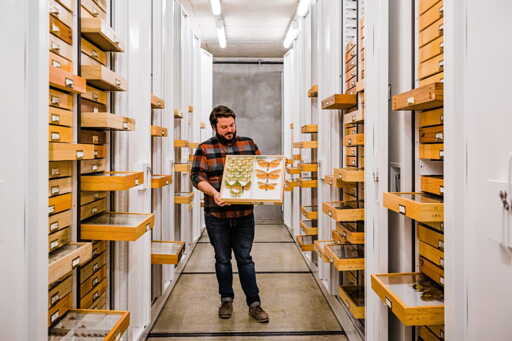Christopher C. Grinter has spent much of his life surrounded by insects, though not in the way most people imagine. As Senior Collection Manager of Entomology at the California Academy of Sciences, he oversees one of the world’s major scientific archives of insects, a record of life that stretches from the smallest moth to the largest butterfly. His work helps support the California All-Taxa Biodiversity Inventory (CalATBI), an effort to document every species in the state before they vanish. Grinter’s fascination began far from California. Growing up in suburban Chicago, he watched butterflies drift through his backyard and wanted to know their names. “It all started with butterflies,” he says. His parents took him to a members’ night at the Field Museum, where he saw an insect collection for the first time. “I had my mind blown.” He began volunteering there, labeling and databasing specimens, and eventually joined scientists in the field. Butterflies led him to moths—far more numerous and largely unseen. “An urban backyard probably has at least a few species of microlepidoptera that still need a scientific name,” he says. Chris Grinter. Photo © California Academy of Sciences That early curiosity became a career in taxonomy and curation. When CalATBI launched, Grinter’s team received funding for large-scale fieldwork across California, collecting hundreds of thousands of insects and covering tens of thousands of miles. The scale of the effort was unlike anything seen in a generation. It produced both scientific treasure and the occasional misadventure—like the time their van…This article was originally published on Mongabay
From Conservation news via this RSS feed


